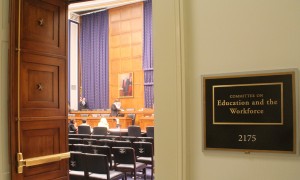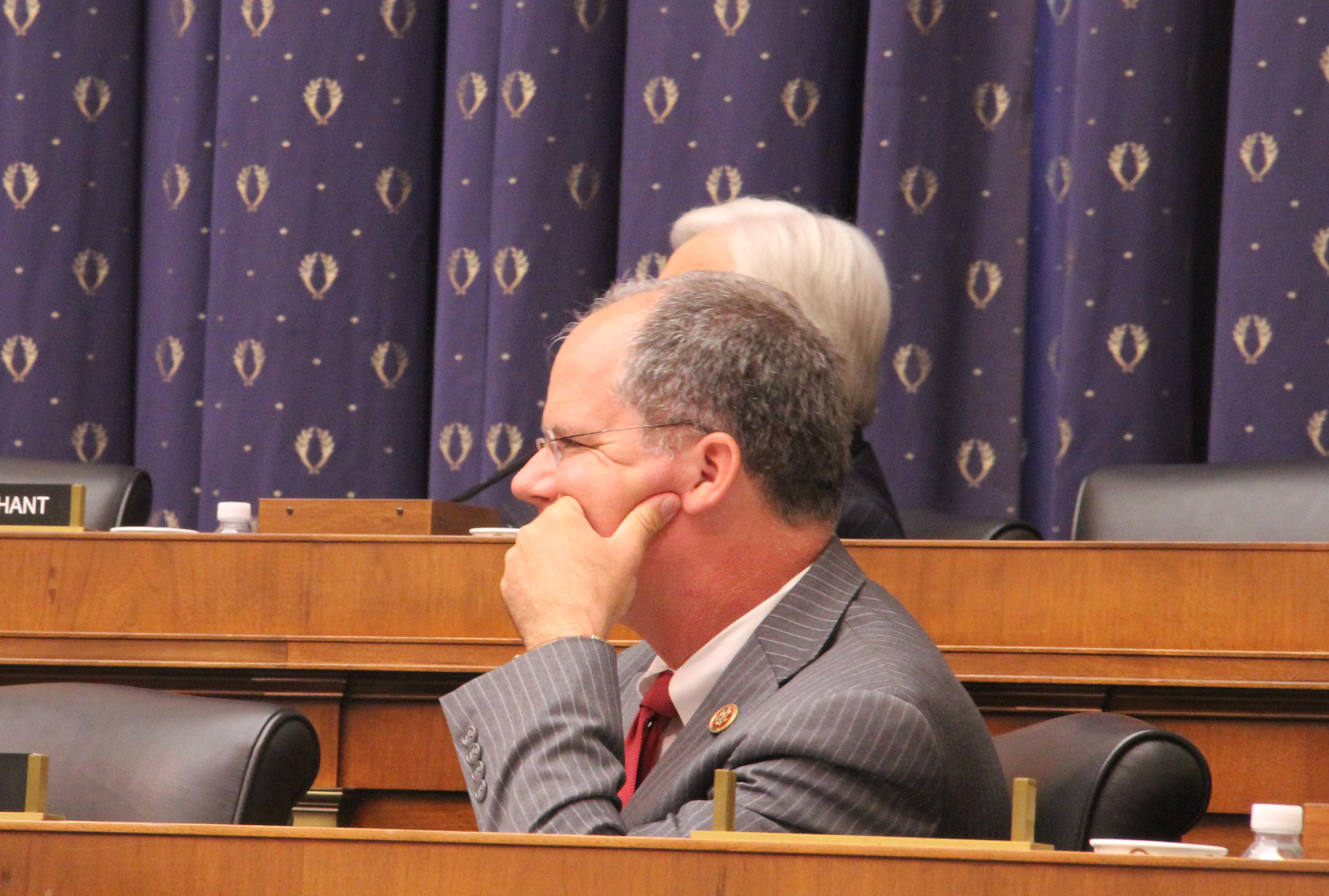
The Education and the Workforce Committee chamber after approving the Guthrie-Hudson amendment. (Caroline Cataldo/MEDILL)
WASHINGTON — As college tuition costs rise across the country, more students look to the federal government for assistance to finance their education.
As of late June, in Frederick County alone, 1,665 public school students had applied for federal financial aid for the 2014-2015 academic year, according to the U.S. Department of Education.
On Thursday, the House Education and the Workforce Committee added an amendment aimed at helping parents and students make smarter, more informed choices throughout the financial aid process. The amendment, introduced by Rep. Brett Guthrie, R-Ky. and Rep. Richard Hudson, R-N.C., is a bipartisan addition to the broader Higher Education Act, which was also approved by the panel.
“We must do all we can to ensure higher education is an achievable dream for today’s students,” Guthrie said. The amendment, which would increase counseling options for parents and students, will help them “better understand the amount of money they can borrow, what financial options to draw from first, the implications of their future debt load, and repayment scenarios,” Guthrie said.
The amendment, if approved by the House and Senate and signed by President Barack Obama, would address five problems with the federal financial aid system:
The Language of Lending:
According to a report conducted by the Federal Reserve Bank of New York surveying students with federal assistance, Guthrie said fewer than 50 percent of those polled felt as though they had “high loan literacy.” More than half of students do not feel as though they have an understanding of the kinds of loans available and steps to repayment.
Individualized choices:
Current loan counseling broadly outlines the life of a loan — from the amount a student should borrow to how much a loan will accrue over a certain period of time. Individualized repayment plans are based off the average salary of the student’s intended profession, painting a clear picture of what her budget would look after graduation.
Transparency:
Rep. Suzanne Bonamici, D-Ore., said the amendment would help students “see the road to repayment” by clearly outlining the amount each student needs to borrow for a specific institution. Borrowers would also receive a free credit report annually.
Options to adjust:
As federal financial aid stands, counseling appointments are only at the beginning and end of a student’s borrowing process, providing them with a brief look at their payment obligations. According to Guthrie, there is no point at which a student can make a choice to adjust the course of her loan payments once set in motion. The amendment would give students the power to adjust payments while still in college.
Parents and students:
Parents of students borrowing on behalf of their children will also have access to the counseling resources outlined in the Guthrie-Hudson amendment.
Bonamici said while some of the information is already available to borrowers, it is up to the Education and the Workforce Committee to make information accessible in a new, “consumer tested” format.
“There is a difference between information that is available and what information students truly interact with and understand,” Bonamici said.
While this amendment is a positive step for families and students, Bonamici said the Higher Education Act still has a long way to go. The committee hopes to bring the legislation to the full House of Representatives before Congress’s summer recess.


